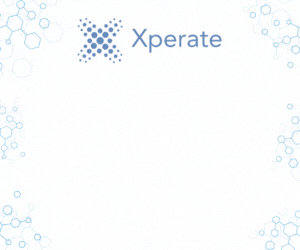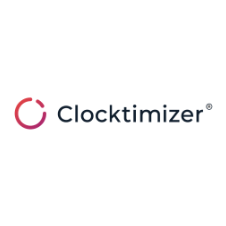Clocktimizer: How aligning legal project management and pricing can drive inclusion
This week saw us host our second joint webinar with Elevate, looking at the single source of truth in data. We were joined once again by Royale Price, the Director of Pricing and Matter Management at Greenberg Traurig; and Stephen Allen, Vice President of getting sh*t done at Elevate (yes, we also think more job titles should sound like this). Our own CEO, Pieter van der Hoeven, joined to set questions and share insights from the Clocktimizer perspective.
The focus this time round looked more squarely at the role of data in managing resources. Our panelists shared the role data can play in accurately staffing matters, in supporting diversity efforts, and in improving the communication between your LPM and Pricing teams. Given how useful this information is, we are sharing a wider wrap up of all of their advice for those who couldn’t make the webinar. A recording of the session is available here.
Data and communication
We left off our last webinar looking at the importance of data in supporting LPM and Pricing efforts. This time around, the panel kicked off exploring how data can also connect and enhance how these teams work together. For Royale, bringing LPM’s into the Pricing process adds a layer of practical insight often missing from pricing.
LPM teams will understand the details of how and why a matter was managed in the past. They are better able to explain why one motion to dismiss was significantly more expensive than another. That sort of insight is invaluable to Pricing teams as it enriches their data sets.
Equally, as Stephen pointed out, Pricing teams will have a more strategic insight into a firm’s positioning. They can take into account whether the work will enhance the brand, or whether the client has sufficient liquidity. This data can deepen the relationship with the client and strengthen your position in the market.
Practical tips to get LPM and Pricing communicating
Both panelists shared a few key tips to get teams talking together:
- Consider breaking down Pricing and LPM teams along practice lines. This gives teams the same frame of reference when scoping and pricing and makes collaboration easier.
- Integrating specific Pricing or LPM specialists into each other’s teams ensures the expertise is always to hand.
- If your teams don’t talk yet, start small. Get pricing and LPM teams to regularly share the work they are scoping or pitching to identify other specialists that can be helpful. Opening lines of conversation is essential.
Don’t just analyse the past, predict the future
For many law firms, most scoping and pricing of a matter is done on the basis of historical matters. The challenge arises when the staff you have priced for are no longer available. Suddenly, the only person able to perform the work is at Senior Partner level, and your budget is shot.
For Stephen, this problem is all too familiar. At Elevate, one of the biggest challenges is knowing when a matter will start, and planning schedules accordingly. To work around this, Elevate works with a trained resource manager. They are responsible for attaching probabilities to work, and balancing workloads accordingly. Their system works by:
- Breaking agendas down into manageable time frames. At Elevate they look at the coming three months of work, both confirmed and likely.
- Assign each work a percentage, indicating how likely it is to happen. Work with a percentage of between 60-90% should be planned in and balanced equally between teams
As noted by Royale, resource management like this can be supported by early warning systems. Platforms like Clocktimizer enable quick oversight of the matters a timekeeper is working on. By setting up notifications you can immediately identify whether an attorney is going to manage their workload, or whether you need to come up with an alternative solution by speaking with your client.
Build a flexible approach to resource management
The decline of the billable hour has led to a knock on problem for law firms, according to Stephen. The financial buffer that used to exist in matters has been reduced as clients demand more transparency in fee arrangements. This means that resource management needs to take a more flexible, proactive approach.
For Royale at Greenberg, this means embracing technology where possible. Instead of staffing for 8 juniors for review, you can staff one, supported by software like Luminance or Ravn.
“There are huge opportunities in using alternative resources, especially where you are using fixed fees to recoup tech costs and drive internal costs lower. This in turn drives down external prices making you more competitive.”
Royale Price, Director of Pricing and Matter Management at Greenberg Traurig
For Stephen, clever use of LPM and resource management can spread the case burden. Identifying patterns in the data can help firms decide whether they should bring in flex workers, outsource the work or look to automate it. For example, if LPMs identify that due diligence work is outstanding because the corporate team is overloaded, they can push this over to a banking team. However, if the work is more specialised, but one-off, they can recommend outsourcing. Starting with the data enables smarter choices which benefit the firm financially in the long run.
Both panelists also highlighted the importance of opening up communication between your resource managers and their respective counterparts on the client side. In Royale’s experience clients are regularly willing to embrace technology where it supports their goals. If using due diligence software enables them to check all documents, instead of just a sample for the same price then that ultimately works to the client’s benefit.
Diversity data
Diversity is being paid more than lip service by clients. Every single RfP worked on by Greenberg Traurig in the last year has had a diversity component. Coca Cola has famously introduced a diversity requirement of at least 30% for their external counsel teams at the beginning of the year. But how can data support diversity efforts at firms?
All three of our panelists had these useful tips:
- Use technology – Stephen noted the importance of spreading out work so that no single person or group is overwhelmed. Tools like Clocktimizer’s social graph visually plot who is working with whom on matters. This way you can make sure work is spread out fairly.
- Look into the type of work assigned – Pieter shared a case study of a firm which dived into the type of work assigned to people of differing ethnicities or backgrounds. They could identify patterns that may then be holding back diversity. If people of a certain gender are always given certain types of work, or less complex work, this can prevent them from advancing their careers. Identifying the problems allows firms to look for a solution.
- Ensure contributions are meaningful – Tokenism is not helping anyone. For Royale, it is important to use data to make sure that diverse teams are allowed to make meaningful contributions to matters, rather than being added for show. Diving into seniority and hours logged to a matter can help gain this insight and show room for improvement.
- Back up data with action – For all panelists, simply collecting diversity data isn’t enough. Entry level legal professionals are now weighted slightly in favour of women than men but that gender parity still isn’t reflected at board level. Combining data insights with change that supports the data findings is essential.
Change doesn’t have to be perfect
“All you require for innovation is that tomorrow is better than today”
Stephen Allen, Vice President of getting sh*t done at Elevate
In wrapping up, our panelists each emphasised that change doesn’t have to be perfect. As Pieter noted, if you improve by 1% per day, the cumulative effect over a year is still dramatic. Simply using your data to continuously improve your resource management, diversity and LPM efforts will quickly add up. What is important is to start moving rather than waiting for the perfect solution or decision to arrive.
We want to once again extend our thanks to Stephen and Royale for joining us to host this webinar. We had some great questions from the audience and enjoyed getting lost down the rabbit hole of data and resource management. Keep an eye out on our social media for the next installment in the series!



